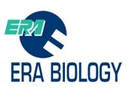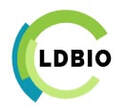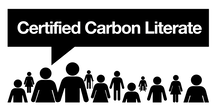Current Mycology Topics
UK Laboratories are unprepared - Can we improve TAT for fungal disease diagnostics?
Antifungal Stewardship Key Publications
Rapid Fungal Diagnostics - Antifungal Susceptibility Testing
Invasive Aspergillosis Key Publications - Pulmonary Aspergillosis Key Publications -
FACIS revolutionises β-D-glucan & Galactomannan testing
simple, rapid and suitable for all laboratories
|
P356 - A retrospective review of the AFS at Leicester
Absolute antifungal expenditure showed an annual decrease of £320,600 |
P222 - A multi-site evaluation of antifungal use- implications for AFS. 'β-D-glucan utilization is greatest when turn-around-time is shortest'
|
Fungal biomarker testing turn-around-times at the National Mycology Reference Laboratory: Setting the record straight.
The MRL letter suggests that delays in reporting are caused at a number of points along the sample processing path such as delays in shipment, local laboratory handling time, all of which are out of control of the MRL. Direct access to MRL Laboratory reports has been available electronically for several years and help in accessing this facility is included in the letter as is the possibility of tracking sample progress.
The MRL letter suggests that delays in reporting are caused at a number of points along the sample processing path such as delays in shipment, local laboratory handling time, all of which are out of control of the MRL. Direct access to MRL Laboratory reports has been available electronically for several years and help in accessing this facility is included in the letter as is the possibility of tracking sample progress.
How Long is Too Long? Fungal biomarker turn-around-time (TAT) and antifungal stewardship. FIS 2018
A median turn-around time of 1-2 weeks significantly devalues the use of fungal biomarkers
A median turn-around time of 1-2 weeks significantly devalues the use of fungal biomarkers
Antimicrobial Stewardship from Policy to Practice:Experiences from UK Antimicrobial Pharmacists
Despite the low incidence of invasive fungal infections compared to bacterial infections, for some specialist centers antimicrobial expenditure is dominated by antifungal use. Antifungal stewardship initiatives are gaining momentum in the UK at present with pharmacists driving the agenda. One such program has suggested savings of approximately £180,000 over a 12-month period by rationalizing and reviewing therapies, while another two programs found stepping down and stopping unnecessary empiric therapy was common.
Despite the low incidence of invasive fungal infections compared to bacterial infections, for some specialist centers antimicrobial expenditure is dominated by antifungal use. Antifungal stewardship initiatives are gaining momentum in the UK at present with pharmacists driving the agenda. One such program has suggested savings of approximately £180,000 over a 12-month period by rationalizing and reviewing therapies, while another two programs found stepping down and stopping unnecessary empiric therapy was common.
EVIDENCE OF SHORTCOMINGS
National mycology laboratory diagnostic capacity for invasive fungal diseases in 2017:
Evidence of sub-optimal practice
In recent years there have been increasing reports of invasive fungal disease and the emergence of more intrinsically resistant species of pathogenic fungi, such as Candida auris. ESPAUR initiated an analysis of current practices in diagnosis and treatment of mycological infections. Key findings published the 2019 report 'National mycology laboratory diagnostic capacity for invasive fungal diseases in 2017;
A report commented under 'Highlights '
National mycology laboratory diagnostic capacity for invasive fungal diseases in 2017:
Evidence of sub-optimal practice
In recent years there have been increasing reports of invasive fungal disease and the emergence of more intrinsically resistant species of pathogenic fungi, such as Candida auris. ESPAUR initiated an analysis of current practices in diagnosis and treatment of mycological infections. Key findings published the 2019 report 'National mycology laboratory diagnostic capacity for invasive fungal diseases in 2017;
A report commented under 'Highlights '
- There is a need to improve the UK diagnostic capacity for invasive fungal diseases.
- A minority of laboratories have local access to 13-D-Glucan and galactomannan testing
- Susceptibility testing of Aspergillus is currently conducted by few laboratories
British Society for Medical Mycology best practice recommendations
- β-D-glucan screening of serum from patients at high risk of invasive fungal disease should be considered as a negative result has a high negative predictive value, enabling invasive fungal disease to be excluded.
- BAL fluid is recommended for diagnosis of invasive fungal disease in patients with haematological disease
- The recommendations emphasise .. and the need for susceptibility testing of all Aspergillus spp,
- All aspergillus isolates from patients who have allergic bronchopulmonary aspergillosis, aspergilloma, or acute or chronic aspergillosis should be susceptibility tested...itraconazole) in case additional susceptibility testing is needed at a later date.
An investigation of antifungal stewardship programmes in England
- 'There is an urgent need to improve across many diagnostic areas including the timely accessibility of/to fungal biomarkers and susceptibility testing.'
- 'Clinicians say: lack of diagnostic tests or long TAT's of tests is a main issue when managing patients with suspected invasive fungal infections.'
An antifungal stewardship programme (AFS) is designed to reduce empirically prescribed antifungal treatments and improve patient care.
The availability of rapid diagnostics and in-house EUCAST broth microdilution will help create an AFS programme.
The availability of rapid diagnostics and in-house EUCAST broth microdilution will help create an AFS programme.
- The automation of β-D-Glucan testing by the FACIS system has made daily testing with a TAT of 2 hours feasible for all laboratories. β-D-Glucan is a key biomarker that has a significant impact on the empiric prescription of antifungals .
- MICRONAUT -AM is based on Broth microdilution susceptibility testing as used by EUCAST and uses EUCAST breakpoints for interpretation of results.
NHS Antifungal Stewardship Implementation Pack - Version: 0.7 June 2019
This pack provides information and guidance to support the local implementation of this Improving Value initiative . A local implementation project can use the guidance contained within this pack to guide successful implementation.
This pack provides information and guidance to support the local implementation of this Improving Value initiative . A local implementation project can use the guidance contained within this pack to guide successful implementation.
Impact of a diagnostics-driven antifungal stewardship programme in a UK tertiary referral teaching hospital. Published JACSept 2018
The AFS programme was successful in reducing the number of inappropriate initiations of antifungals by 90%. Concurrently, mortality due to invasive candidosis was reduced by 58%. BOG testing can guide safe cessation of antifungals in ICU patients at risk of invasive candidosis.
The AFS programme was successful in reducing the number of inappropriate initiations of antifungals by 90%. Concurrently, mortality due to invasive candidosis was reduced by 58%. BOG testing can guide safe cessation of antifungals in ICU patients at risk of invasive candidosis.
Effectiveness of an antifungal stewardship programme at a London teaching hospital 2010-16 Published JAC January 2019
'Empirical treatment was often unnecessary, with 82% having no evidence of IFI. Advice was given in 64% of reviews (most commonly de-escalating or stopping treatment) and was followed in 84%.'
'Empirical treatment was often unnecessary, with 82% having no evidence of IFI. Advice was given in 64% of reviews (most commonly de-escalating or stopping treatment) and was followed in 84%.'
Antifungal stewardship in critical care: Implementing a diagnostics-driven care pathway in the management of invasive candidiasis Published June 2020
'Although adopting a diagnostics-driven approach was found to be useful in the cohort of patients with BDG results available, the use of once-weekly BDG testing did not result in an observed reduction in the consumption of anidulafungin , highlighting an important limitation of this approach.'
'Although adopting a diagnostics-driven approach was found to be useful in the cohort of patients with BDG results available, the use of once-weekly BDG testing did not result in an observed reduction in the consumption of anidulafungin , highlighting an important limitation of this approach.'
An Evaluation of Beta D-Glucan Testing as an Antimicrobial Stewardship Tool in a Tertiary Referral Hospital FIS poster 2020
Conclusion: BDG testing contributes to the improved diagnosis of fungal infections and a negative BDG has value as an AMS tool. 72 negative results contributed to the avoidance or cessation of antifungal therapy with a clear cost saving.
Conclusion: BDG testing contributes to the improved diagnosis of fungal infections and a negative BDG has value as an AMS tool. 72 negative results contributed to the avoidance or cessation of antifungal therapy with a clear cost saving.
Recent Advances and Novel Approaches in Laboratory-Based Diagnostic Mycology Published Medical Mycology 2020
'The application of digital readers-which provide a quantitative output are a major improvement when using LFD, removing subjectivity and providing a value for clinical interpretation and have been identified as critical to clinical use, can be applied to both serum and BAL fluid.
'The application of digital readers-which provide a quantitative output are a major improvement when using LFD, removing subjectivity and providing a value for clinical interpretation and have been identified as critical to clinical use, can be applied to both serum and BAL fluid.
Fungal Disease Diagnostics from BioConnections
Invasive Aspergillosis KEY PUBLICATIONS
COVID-19 associated invasive aspergillosis: data from the UK National Mycology Reference Laboratory. From the discussion 'In addition to radiological imaging, serial screening for CAPA (CoVID Associated Pulmonary Aspergillosis) in ICU patients with deteriorating respiratory function should include: (i) regular (at least weekly) Aspergillus antigen testing of serum samples, (ii) regular (at least weekly) BOG testing of serum samples , (iii) Aspergillus antigen testing of BAL fluids (where available) or non -directed lavages/tracheal aspirates and (iv) Aspergillus PCR in conjunction with conventional mycological examination (microscopy and culture) of respiratory secretions if available. '
COVID-19 associated invasive aspergillosis: data from the UK National Mycology Reference Laboratory. From the discussion 'In addition to radiological imaging, serial screening for CAPA (CoVID Associated Pulmonary Aspergillosis) in ICU patients with deteriorating respiratory function should include: (i) regular (at least weekly) Aspergillus antigen testing of serum samples, (ii) regular (at least weekly) BOG testing of serum samples , (iii) Aspergillus antigen testing of BAL fluids (where available) or non -directed lavages/tracheal aspirates and (iv) Aspergillus PCR in conjunction with conventional mycological examination (microscopy and culture) of respiratory secretions if available. '
Pulmonary Aspergillosis KEY PUBLICATIONS
Chronic Pulmonary Aspergillosis-Where Are We? and Where Are We Going?
'The use of Aspergillus lgG antibody as a diagnostic tool is far superior to the use of Aspergillus precipitins and should always be used as the gold standard ..to confirm infection.'
Chronic Pulmonary Aspergillosis-Where Are We? and Where Are We Going?
'The use of Aspergillus lgG antibody as a diagnostic tool is far superior to the use of Aspergillus precipitins and should always be used as the gold standard ..to confirm infection.'
Evaluation of LDBio Aspergillus ICT Lateral Flow Assay for lgG and lgM Antibody Detection in Chronic Pu monary Aspergillosis
The LDBIO Aspergillus ICT lgG-lgM immunochromatographic technology (ICT) test was compared with Aspergillus lgG titers in CPA patients, measured by lmmunoCAP-specific lgG assays (cutoff value, 40 mg of antigen-specific antibodies [mgA]/liter For proven CPA patients versus controls, sensitivity and specificity for the LDBio Aspergillus ICT were 91.6% and 98.0%, respectively. In contrast, the routinely used lmmunoCAP assay exhibited 80.5% sensitivity for the same cohort
Of the 154 patients in our CPA case group, 108 had precipitins testing (for Aspergillus antibody) performed as part of routine diagnostics, with 57.4% sensitivity.
The LDBIO Aspergillus ICT lgG-lgM immunochromatographic technology (ICT) test was compared with Aspergillus lgG titers in CPA patients, measured by lmmunoCAP-specific lgG assays (cutoff value, 40 mg of antigen-specific antibodies [mgA]/liter For proven CPA patients versus controls, sensitivity and specificity for the LDBio Aspergillus ICT were 91.6% and 98.0%, respectively. In contrast, the routinely used lmmunoCAP assay exhibited 80.5% sensitivity for the same cohort
Of the 154 patients in our CPA case group, 108 had precipitins testing (for Aspergillus antibody) performed as part of routine diagnostics, with 57.4% sensitivity.
Evaluation of the LDBio Aspergillus ICT lateral flow assay for serodiagnosis of allergic bronchopulmonary aspergillosis.
Early recognition and diagnosis of allergic bronchopulmonary aspergillosis (ABPA) is critical to improve patient symptoms, and antifungal therapy may prevent or delay progression of bronchiectasis and development of chronic pulmonary aspergillosis. ABPA and control sera collected at the National Aspergillosis Centre (Manchester, UK) and/or from the Manchester Allergy, Respiratory and Thoracic Surgery research biobank were evaluated using the Aspergillus ICT assay. Results were read both visually and digitally (using a lateral flow reader) . Serological Aspergillus-specific lgC and lgE, and total lgE titres were measured by lmmunoCAP.
. The test effectively distinguished between Aspergillus-sensitization complicating asthma and/or bronchiectasis , and underlying conditions. It is rapid (result in <30 minutes) and easy to perform, with simple result interpretation by visible insp ection. Overall, the LDBio Aspergillus ICT exhibits excellent performance as a screening tool in the ABPA diagnostic pathway
Early recognition and diagnosis of allergic bronchopulmonary aspergillosis (ABPA) is critical to improve patient symptoms, and antifungal therapy may prevent or delay progression of bronchiectasis and development of chronic pulmonary aspergillosis. ABPA and control sera collected at the National Aspergillosis Centre (Manchester, UK) and/or from the Manchester Allergy, Respiratory and Thoracic Surgery research biobank were evaluated using the Aspergillus ICT assay. Results were read both visually and digitally (using a lateral flow reader) . Serological Aspergillus-specific lgC and lgE, and total lgE titres were measured by lmmunoCAP.
. The test effectively distinguished between Aspergillus-sensitization complicating asthma and/or bronchiectasis , and underlying conditions. It is rapid (result in <30 minutes) and easy to perform, with simple result interpretation by visible insp ection. Overall, the LDBio Aspergillus ICT exhibits excellent performance as a screening tool in the ABPA diagnostic pathway








